[Beginner's Course] Crypto Academy Season 3/ Week 8 - Homework Post for Professor @awesononso [Blockchain Rewards by @rosita-nkefor]
Greetings dear students and professors. I'd like to thank Professor @awesononso for this lecture as I learned a lot from it. And finally, I get a post where I solve (I love solving). So without further ado, here's my homework post.

Blockchain Rewards by @rosita-nkefor
1. In your own words, explain mining and block reward.
Mining as seen in the world of cryptocurrency, actually refers to the process which is done by someone called a miner. The process is actually as follows:
- The miner verifies transactions to ensure that they are free of any double spending.
- He then collects the verified transactions till he forms a new block full of information.
- He now takes the new block and tries to add to the previous block on the ledger.
- To add the new block, he needs to look for the right hash as every block has a unique hash.
- When he gets the right hash, he adds the block to the blockchain successfully.
The thing about mining is that it's a matter of who can get the right hash faster. That is why people who wish to gain heavily buy specialised machines just to discover the right hash before anyone does.
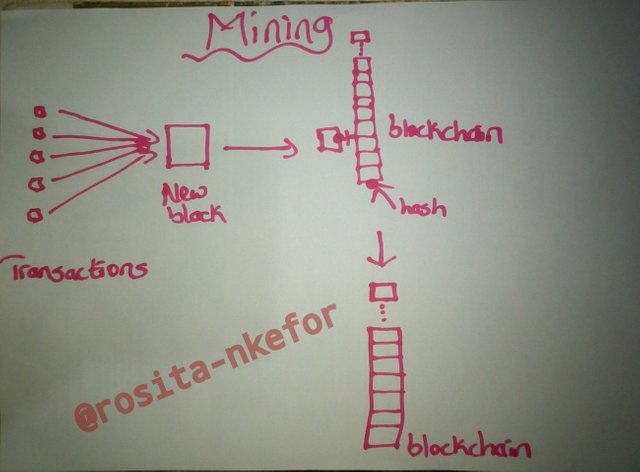
Block rewards by deduction basically means reward for adding a block. That is, when a miner goes through all the trouble of verifying transactions, forming blocks, finding the right hash and adding a new block, they get compensated for all their work. This payment comes as new coins which can then be introduced to the market by these miners. These rewards are very essential because as the days go by, mining becomes very hard causing miners to invest a lot of money so as to buy high tech machines.
Imagine that upon their huge investments, they were not paid anything, then nobody will mine and the cryptocurrency will not be highly sought for. But now since the rewards are quite profitable, everybody is struggling to mine which just means it's demand keeps increasing this increasing it's value.
2. What do you understand by the Bitcoin Halving?
Bitcoin halving by deduction means that something is getting divided by 2. Just like how the activity of a radioactive substance divides by two after it's half life, it is the same phenomenon applied to Bitcoin. Bitcoin has a period or half life, after which the amount of new coins being sent into the market as block rewards for miners divide by two.
But unlike the above mentioned comparison, the half life is measured rather in blocks. The half life of Bitcoin is 210,000 blocks which means that a Bitcoin halving occurs after every 210,000 new blocks have been added to the ledger or blockchain.
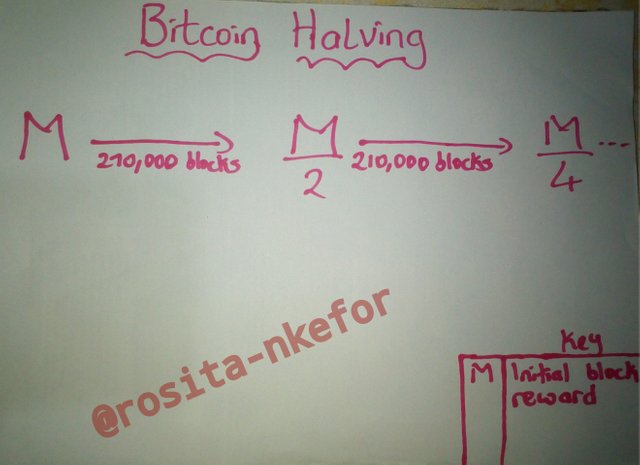
3. What are the effects of the Halving on miners?
New coins are added to the circulating supply by miners. The coin was also made in a way, that the more coins are mined, the more difficult mining becomes. So imagine how miners are effected when they get paid half of the reward for twice as much more work.
In order for miners to generate a lot of money for well mining, they need a lot of resources. Their machines will have to be very powerful and they will need specialised computer chips, which require huge sums of money.
On top of that, the machines need time no matter how powerful they are to find the right hash. Running these machines requires a lot of energy which also drives up costs. So when the reward for all this time, money and energy reduces by half, miners are obviously not happy. In order to combat this and reduce losses, the number of solo miners reduced while mining pools on farms were introduced.
4. What is the current block height on the Bitcoin blockchain? How many more blocks before the next halving?(Screenshots and Full working)
Here is the data as taken from blockexplorer.one at the time of writing.
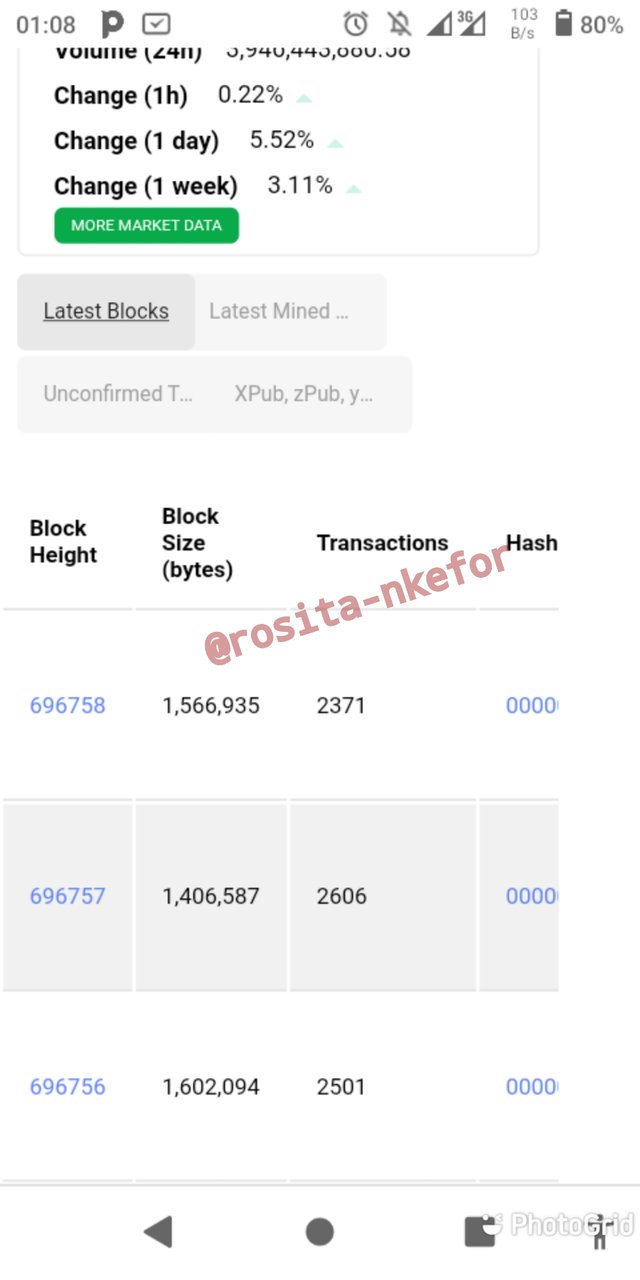
The current block height of Bitcoin is 696758 blocks . And we know that Bitcoin has already gone through three halvings since it's half life is 210,000 blocks. Therefore, the next halving will be number four.
Calculations
Current block height = 696758 blocks
Block height at fourth halving = 4 × 210,000 blocks = 840,000 blocks
-> Number of blocks till fourth halving= Block height at fourth halving - Current block height
=840,000 - 696758
= 143,242 blocks
Thus, we have 143,242 blocks to add to the ledger till the fourth halving occurs.
5. Do you think Steem’s inflation rate reduction can affect other coins? Why?
The steem blockchain has steem as it's native token or coin. What does this mean, it means that most transactions done on this platform use steem as a fuel. Now, this blockchain has other tokens built on it.
And for these new tokens to be used, steem will be needed. And if the inflation rate of steem decreases, an increase in it's value will be noted. When the value of steem rises, automatically, the value of the tokens built on it's blockchain will also increase and vice versa.
Therefore, the inflation rate reduction of steem can affect other coins built on the steem blockchain.
In order for the inflation rate reduction of steem to affect other coins on other blockchains, steem will need to have a large market dominance. But that is not the case and thus, a reduction in it's inflation rate will not affect other coins built on other blockchains.
6. What is the current block height on the Steem blockchain? How many more blocks before the next 0.01% reduction?(Screenshots and Full working)
The current block height on the steem blockchain at the time of writing is 56,543,778 blocks as shown by the screenshot from steemscan.com.
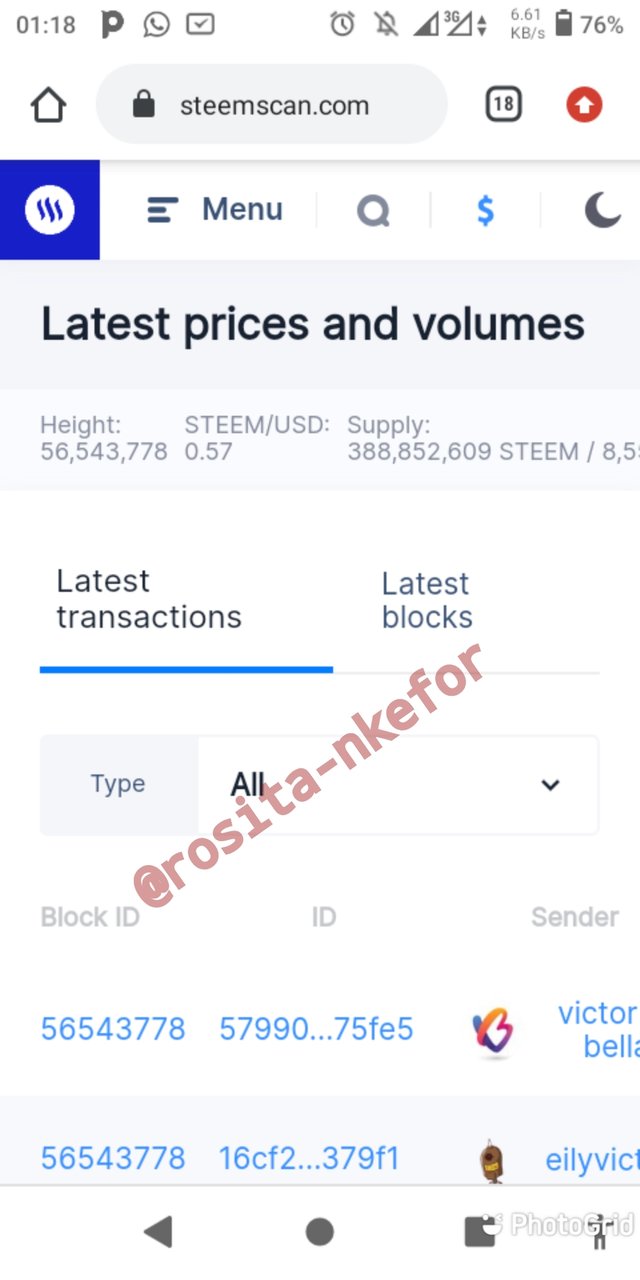
Calculations
The inflation rate drops by 0.01% every 250,000 blocks.
Number of drops: 56,543,778/250,000 = 226.175112 blocks
Rounding up, the next drop will be the 227th.
Block height at the next reduction:
227 × 250000=56,750,000 blocks
Number of blocks till next reduction:
56,750,000 - 56,543,778 = 206,222 blocks
Therefore, we have 206,222 blocks until the next reduction.
Continuation of last week’s work
1. What is the current value of BTC on the day you are performing this task? If you made a purchase of $2,500 then,
a.) how many satoshis would you have?
b.) what is the value of a satoshi for that day?
(Show full working and correct to 3 s.f)
(1 satoshi = 0.00000001 BTC)
The value of BTC at the time of writing is $49,011.49 as seen in the screenshot.
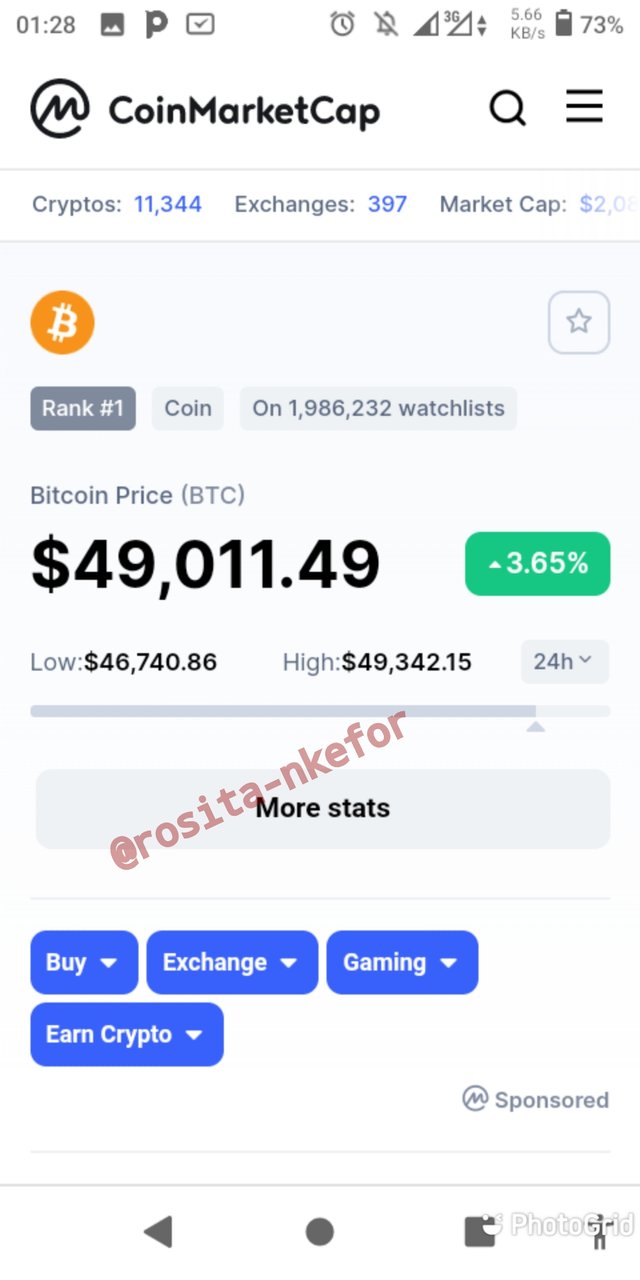
a) If I purchase $2500 worth of Bitcoin,
$49,011.49 = 1 BTC
$2500 = ($2500 × 1)/$49,011.49
= 0.0510084472028 BTC
= 0.051 BTC
But 0.00000001 BTC = 1 Satoshi
So 0.051 BTC = (0.051 BTC × 1 Satoshi)/0.00000001
= 5,100,000 Satoshis
b) Since 1 satoshi = 0.00000001 BTC and 1 BTC = $49,011.49,
The value of 1 Satoshi = $49,011.49 × 0.00000001 BTC
= $0.0004901149
= $0.00049 to 3s.f
2. What is the current value of BNB on the day you are performing this task? If you made a purchase of $30 then,
a.) how many Jagers would you have?
b.) what is the value of a Jager for that day?
(Show full working and correct to 3 s.f)
(1 jager = 0.00000001 BNB)
(Screenshots of current value should be provided)
The value of BNB at the time of writing is $448.12.
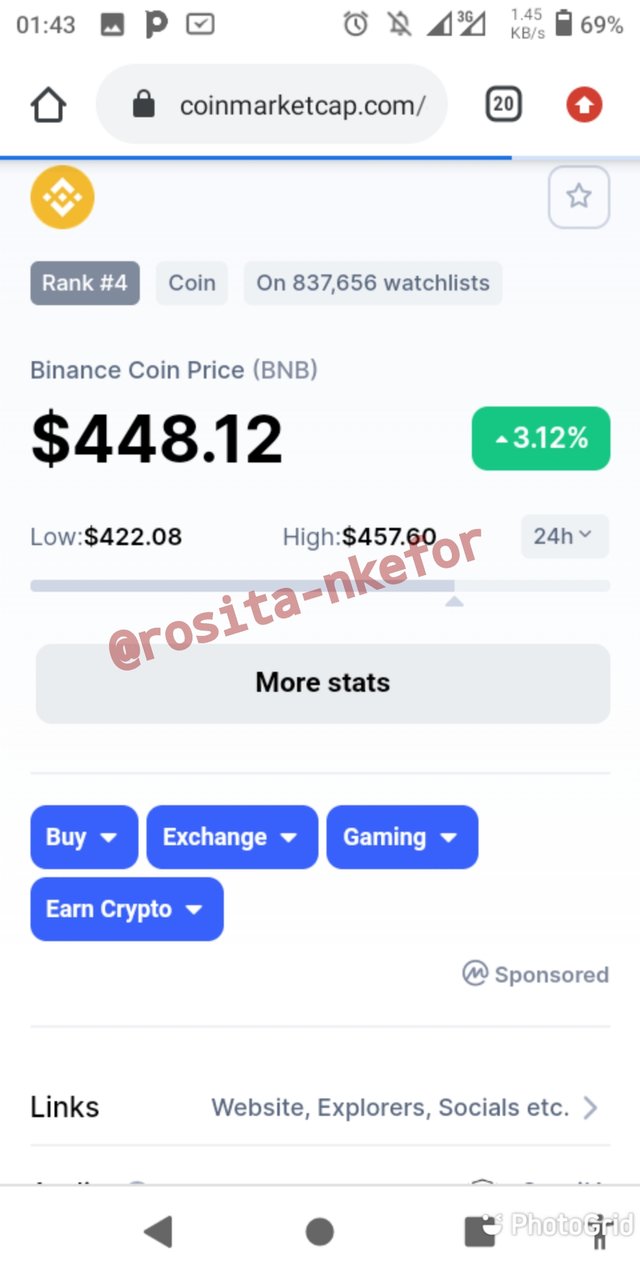
a) If a purchase BNB worth $30,
$448.12 = 1 BNB
$30 = 30/448.12
= 0.0669463536552 BNB
= 0.0669 BNB
But 0.00000001 BNB = 1 Jager
So 0.0669 BNB = 0.0669/0.00000001
= 6,690,000 Jagers
b) We know that 1 jager = 0.00000001 BNB and 1 BNB = $448.12
Hence, the value of 1 Jager = 448.12 × 0.00000001
= $0.0000044812
= $0.00000448 to 3 s.f
That's all about my assignment. I hope the questions were all answered sufficiently.
Thank you for reading.
NB: All photos are mine.